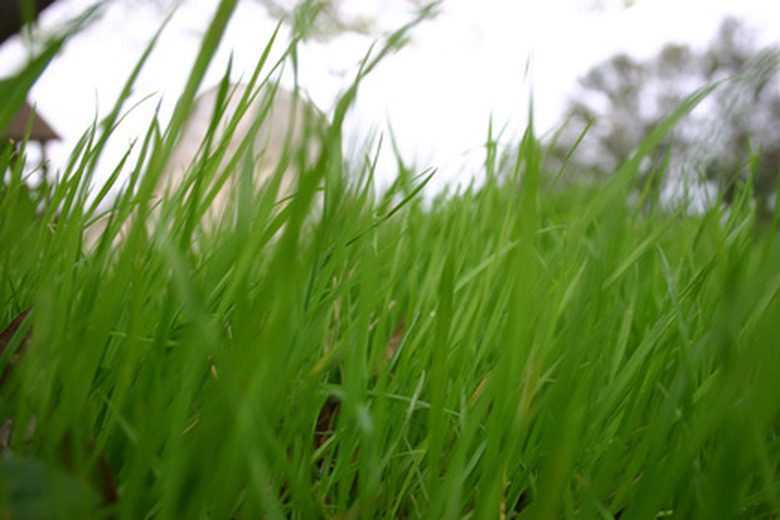Lawn Fertilizer Schedule For Georgia
Georgia's climate in winter varies from the 30s in the northern section to the 50s in the southern area, and summer is generally hot throughout the state. These conditions allow the use of a number of different grasses in the state. Some of these turf grasses are cold sensitive, while others will brown during the winter months and then green up when temperatures warm. Turf grasses benefit from a regular schedule of fertilizer application to withstand the varying temperature patterns.
Georgia's climate in winter varies from the 30s in the northern section to the 50s in the southern area, and summer is generally hot throughout the state. These conditions allow the use of a number of different grasses in the state. Some of these turf grasses are cold sensitive, while others will brown during the winter months and then green up when temperatures warm. Turf grasses benefit from a regular schedule of fertilizer application to withstand the varying temperature patterns.
Soil Testing
The best way to find out exactly what nutrition your lawn needs is to perform a soil test. Most Georgia soils are not high in the nitrogen, phosphorus and potassium that lawns require for optimum health and good appearance. To test your soil, dig down 3 to 4 inches vertically in several spots to remove representative samples of the dirt. Put these into plastic bags and label, and then send them to your local agricultural extension service. They will analyze the soil to find out the pH and nutrient content, and whether there are any toxic contaminants. This information tells you the correct proportion of fertilizer nutrients required to keep your lawn healthy and growing, as well as how frequently you should apply additional fertilizer.
- Georgia's climate in winter varies from the 30s in the northern section to the 50s in the southern area, and summer is generally hot throughout the state.
- This information tells you the correct proportion of fertilizer nutrients required to keep your lawn healthy and growing, as well as how frequently you should apply additional fertilizer.
Fertilizer Schedules
Most warm season grasses like bahiagrass and St. Augustine benefit from early spring and fall applications with a nitrogen-phosphorus-potassium complete fertilizer. Apply fertilizer three to five times during the growing season. Centipedegrass is a grass that benefits from fewer applications of fertilizer. Avoid fertilizing centipedegrass in early spring, then applying a high potassium fertilizer in mid-June. Apply an application of high phosphorus fertilizer before the first frost. Apply fertilizer to cool season grasses like tall fescue and Kentucky bluegrass primarily in early September and November. Add a short feeding of fertilizer in April.
- Most warm season grasses like bahiagrass and St. Augustine benefit from early spring and fall applications with a nitrogen-phosphorus-potassium complete fertilizer.
- Apply an application of high phosphorus fertilizer before the first frost.
Fertilizer Precautions
You should not fertilize your lawn late in the autumn or early winter to prevent early growth that cold temperatures could damage. Inorganic fertilizers release their nutrients more quickly than organic fertilizers. This can lead to "burning" of the leaf plants. To prevent burning, avoid over fertilizing your lawn and do not fertilize when leaf blades are wet.
Types of Fertilizer
Inorganic fertilizer is formulated from chemical ingredients that are mixed in a variety of proportions of nitrogen, phosphorus and potassium. Organic fertilizers are formulated from natural ingredients in which these components are found. Inorganic fertilizers generally cost less than organic types. Organic fertilizer run-off will not disrupt the ecology of nearby lakes and waterways
- You should not fertilize your lawn late in the autumn or early winter to prevent early growth that cold temperatures could damage.
- Inorganic fertilizers generally cost less than organic types.
